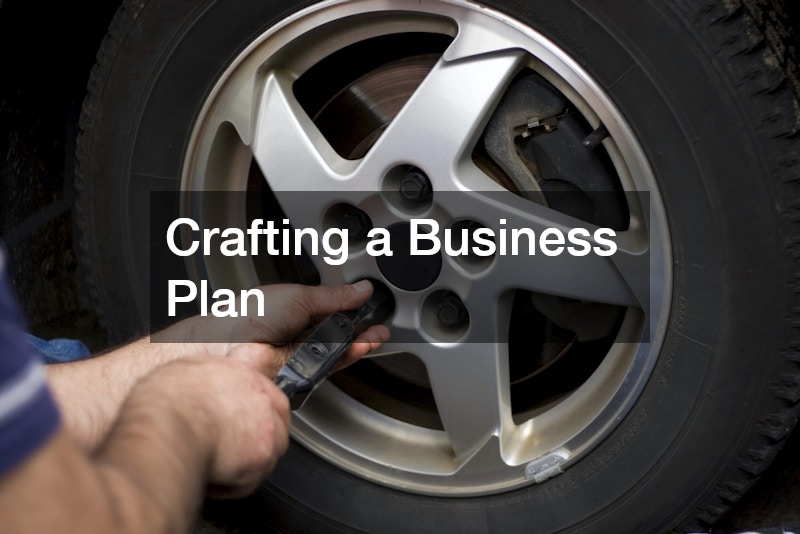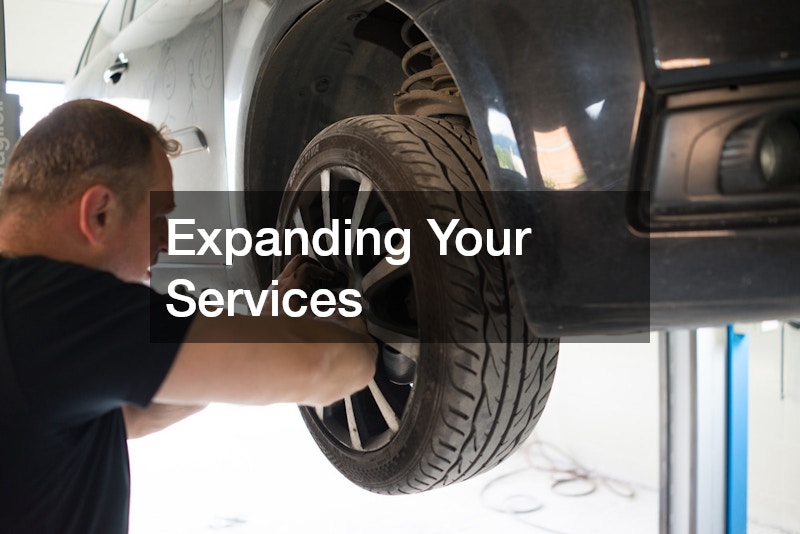Starting and maintaining an auto shop in 2025 can be a rewarding venture, but it requires careful planning, a commitment to quality service, and a keen understanding of the automotive industry. Here’s your guide to launching a thriving auto shop and sustaining success in a competitive field.
1. Research and Planning: Setting the Foundation
A successful auto shop starts with extensive research and planning. Understanding the market, your potential clients, and the competition is essential. Identify gaps in local services, whether it’s auto brake repairs, truck transmission maintenance, or bumper repair services.
Key Considerations:
- Identify Services in Demand: Evaluate which services are most in demand. For example, local drivers may need a reliable source for Porsche repairs, vehicle inspection, and brake service.
- Competitor Analysis: Investigate nearby competitors to see what services they offer and how you can differentiate your auto shop. Study the pricing, reputation, and specialization of local auto repair shops to tailor your offerings effectively.
- Determine Your Niche: While general auto repair shops serve a wide audience, specializing in certain areas like truck accessories or high-end auto mechanic services may attract specific clientele.
2. Crafting a Business Plan

Once you understand the market, create a detailed business plan that outlines your goals, service offerings, startup costs, and strategies for growth. This document serves as a roadmap for your business and can also attract investors.
Key Elements to Include:
- Mission and Vision: Define the purpose of your auto shop and what sets it apart.
- Funding Needs and Sources: Calculate startup costs, including equipment for services like brake service, bumper repair, and truck transmission work.
- Pricing Strategy: Factor in local competition, material costs, and labor expenses to set competitive yet profitable prices.
- Target Audience: Define your ideal customer demographic. Will your shop serve regular drivers, luxury car owners, or commercial truck operators?
3. Securing Financing and Licensing
Funding is one of the biggest hurdles for new auto shops. Consider traditional loans, grants, or investors to cover expenses. Ensure you have the right licenses and certifications, as this demonstrates professionalism and builds customer trust.
Steps to Take:
- Gather Financial Documents: Banks and investors require financial projections and a breakdown of your business plan.
- Shop for Equipment Financing: Specialized tools for Porsche repairs, vehicle inspections, and truck accessories can add up, so compare options for equipment financing.
- Obtain Necessary Licenses and Insurance: Ensure you have business insurance and relevant licenses to perform services like auto brake repairs and brake service legally.
4. Setting Up Your Shop for Success
The layout and location of your shop are crucial to customer satisfaction. Aim for an accessible location with adequate parking and a spacious work area.
Essentials for Your Shop:
- Location: Choose a location that’s visible, accessible, and in an area with demand for services such as auto brake repairs and bumper repair.
- Equipment and Tools: Stock up on high-quality tools. Essential tools include brake service equipment, lift systems, and diagnostic tools for vehicle inspections.
- Organized Workflow: Design a workflow to handle multiple vehicles without congestion. This is especially important if your shop plans to offer specialized services like truck transmission repairs.
5. Hiring Skilled Technicians and Staff

The expertise of your auto mechanics is key to your shop’s reputation. A well-trained team will provide excellent customer service and perform quality repairs.
Tips for Building Your Team:
- Hire Experienced Auto Mechanics: Look for technicians skilled in services ranging from basic auto brake repairs to Porsche repairs and complex truck transmission work.
- Prioritize Customer Service Skills: Customer satisfaction is paramount. Hire staff that is courteous and knowledgeable about processes like vehicle inspections and auto insurance claims.
- Invest in Ongoing Training: Keep your team updated with the latest tools and techniques, such as new brake service technologies and best practices for bumper repair.
6. Marketing Your Auto Shop
An effective marketing strategy will bring new customers to your shop. Use both online and offline tactics to promote your services and create a positive brand image.
Marketing Ideas to Consider:
- Create a Strong Online Presence: A website showcasing your services, such as auto brake repairs, truck accessories, and Porsche repairs, will reach a broad audience. Ensure it’s mobile-friendly and optimized for search engines.
- Social Media Marketing: Platforms like Facebook, Instagram, and Google My Business are ideal for sharing updates, promotions, and customer reviews.
- Leverage Local SEO: Optimize your website for keywords like “local auto repair shop” to attract customers in your area. List your shop on directories to improve visibility.
7. Delivering Exceptional Customer Service
Providing excellent service keeps customers coming back. Ensure every customer interaction is positive and professional to build trust and loyalty.
Keys to Great Customer Service:
- Clear Communication: Explain repair processes like brake service or truck transmission issues in terms the customer can understand.
- Efficient Vehicle Inspections: Offer a thorough vehicle inspection before and after repairs. This shows professionalism and builds trust.
- Handle Auto Insurance Claims: Guide customers through auto insurance claims for services like bumper repair and truck accessories installations, ensuring a smooth process.
8. Implementing Technology and Management Systems
Technology is advancing rapidly, and auto shops that adopt modern tools can streamline operations and enhance customer satisfaction.
Technological Investments to Consider:
- Repair Management Software: Use software to track jobs, inventory, and invoices. This helps your team stay organized and improves communication.
- Diagnostic Tools: Invest in diagnostic tools for Porsche repairs and truck transmission diagnostics to provide faster and more accurate assessments.
- Customer Relationship Management (CRM): A CRM can help manage customer interactions and streamline follow-ups for services like auto brake repairs and brake service.
9. Managing Finances and Budgeting

Financial management is crucial for long-term success. Regularly track your shop’s financial performance to ensure profitability.
Financial Management Tips:
- Monitor Expenses: Keep an eye on costs related to parts, labor, and overhead. Brake service equipment, for example, may require regular maintenance.
- Create a Budget: Set a budget that includes projected income, expenses, and emergency funds for unexpected repairs or equipment needs.
- Review Profit Margins: Regularly review the profit margins on services like bumper repair, auto brake repairs, and truck accessories installations to adjust pricing if needed.
10. Building and Maintaining Your Reputation
Your shop’s reputation is built on consistent quality and excellent service. Keep customers satisfied to foster word-of-mouth referrals.
Reputation Management Strategies:
- Encourage Customer Reviews: Positive reviews can boost your shop’s credibility. Encourage satisfied customers to leave feedback.
- Deliver Consistent Quality: Ensure every job, whether it’s vehicle inspection or bumper repair, meets high-quality standards.
- Engage with Customers Online: Respond to reviews, answer questions, and post updates about your services, such as Porsche repairs or brake service, on your website and social media channels.
11. Offering Value-Added Services
Offering additional services can increase revenue and make your shop a go-to resource for customers. Value-added services create convenience and enhance customer satisfaction.
Popular Add-On Services:
- Auto Brake Repairs and Brake Service: Brake services are essential for all drivers. Promote your shop as a reliable source for brake service and repairs.
- Truck Accessories Sales and Installation: Selling truck accessories can attract truck owners looking to customize their vehicles.
- Bumper Repair and Dent Removal: Cosmetic repairs such as bumper repair can appeal to customers looking to maintain their vehicle’s appearance.
12. Staying Compliant and Adapting to Regulatory Changes
Compliance is essential for any auto shop. Staying updated with regulatory changes ensures your shop meets safety and quality standards.
Steps for Compliance:
- Regular Safety Audits: Conduct audits to check that your shop meets all health and safety guidelines.
- Environmental Compliance: Auto shops often deal with hazardous materials. Ensure you comply with waste disposal regulations.
- Stay Updated on Legal Changes: Keep informed of any changes affecting services like auto brake repairs, vehicle inspections, and other automotive work.
13. Expanding Your Services

Once your shop is established, consider expanding to meet new customer needs. Diversification can drive growth and build resilience.
Expansion Ideas:
- Offer Fleet Services: Expand to serve corporate fleets, offering regular vehicle inspections and maintenance.
- Add Specialized Services: If there’s demand in your area, consider adding specialized services such as Porsche repairs or truck transmission rebuilds.
- Mobile Services: Consider offering mobile repair services for simpler tasks like auto brake repairs and bumper repair, allowing you to reach a broader customer base.
14. Adapting to Industry Trends
The automotive industry evolves constantly, with new technologies and consumer preferences emerging. Staying informed on trends keeps your shop competitive.
Trends to Watch:
- Electric Vehicle (EV) Repair Services: As EV adoption grows, there will be more demand for EV-related services, such as battery diagnostics and repairs.
- Connected Car Diagnostics: Cars with connected technology are increasingly common. Invest in diagnostic tools that can handle advanced vehicle inspection tasks.
- Focus on Sustainability: Many customers now seek environmentally friendly services. Consider eco-friendly options in waste disposal, recycling, and parts sourcing.
15. Networking with Other Auto Shops and Industry Professionals
Building relationships with other auto repair professionals can offer valuable insights and support your shop’s growth.
Networking Strategies:
- Join Trade Associations: Associations like the Automotive Service Association (ASA) can provide industry updates, resources, and networking opportunities.
- Collaborate on Specialized Services: If another shop specializes in bumper repair or truck accessories, consider a referral arrangement.
- Attend Industry Events: Trade shows and conferences offer a chance to see new products, learn best practices, and meet potential partners.
16. Planning for Long-Term Growth
The automotive market is competitive, and planning for long-term growth helps sustain your business through economic changes and industry shifts.
Long-Term Growth Tips:
- Set Growth Targets: Define goals for revenue, customer base, and service expansion.
- Evaluate Profitability Regularly: Keep track of which services, like auto brake repairs or Porsche repairs, are most profitable and consider ways to optimize them.
- Train and Retain Skilled Technicians: Invest in your team’s skills to keep them up-to-date on industry changes.
Building a successful auto shop in 2025 requires a blend of market knowledge, quality service, and a forward-thinking approach. From auto brake repairs to truck transmission work, the right combination of services and excellent customer care can set your shop apart. By following these steps, you’ll be well on your way to creating an auto repair shop that thrives and grows well into the future.
